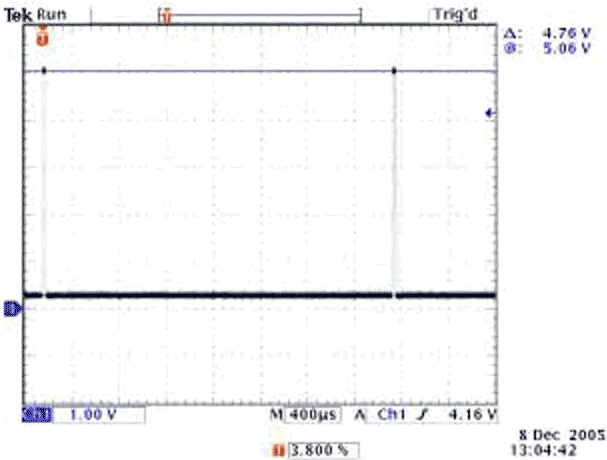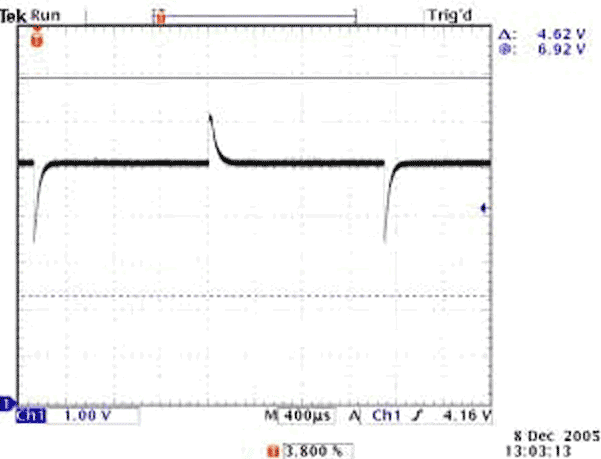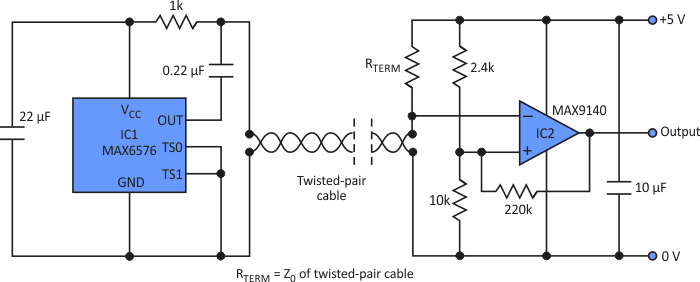The best way to make midrange, low- to medium-accuracy temperature measurements (considering size, cost, performance, and ease of use) is to use an IC temperature sensor. But most IC temperature sensors are designed for applications where the circuits to which they connect are nearby. Therefore, the inclusion of sensing, digitizing, and signal- processing functions in one IC greatly simplifies the design of such sensors and the data-acquisition interface.
Some applications, however, require the acquisition of temperature data from locations quite remote from the power supply and data-processing electronics. These systems demand extra care, because any deterioration in the signal from the remote sensor can degrade the measurement quality.
Choosing to digitize and process the signal at the point of measurement (near the sensor) greatly reduces the problem of signal integrity. However, that approach also complicates the interconnection and raises the problem of supplying power to the circuit. Either design option – signal processing remotely or at the sensor – requires cabling that's complex or expensive or both.
Figure 1 shows a simple and economical interface for remote IC thermal sensors. IC1, a MAX6576, is an absolute temperature-to-period converter that integrates a sensor with the necessary signal electronics. It connects to the receiver (a simple comparator) using a twisted-pair cable that simultaneously carries power to the sensor and signals from the sensor.
At the receiving end, you can recover the temperature data from the comparator-output pulses with a simple timer/ counter routine executed by a microcontroller. Or, in analog form, you can use a constant-slope, linear saw-tooth generator synchronized with the received pulses, followed by a peak sample/hold (S/H) converter.
 |
|
| Figure 2. | The receiver output pulses for a 1000-m twisted-pair cable exhibit the expected 3-ms period. |
With its TS0 and TS1 terminals connected, the MAX6576 exhibits a digitizing conversion constant of 10 µs/K (Fig. 1). So at room temperature (300 K), the output pulse period should be 3000 µs (3 ms), which corresponds to a repetition rate of about 333 Hz. Figure 2 shows this to be the case, even with a 1000-m (approximately 3300-ft) cable. Similar results were obtained using a 60-cm (2-ft) cable. Figure 3 shows the receiver's input pulses using the 1000-m twisted-pair cable. The timing results were similar to those measured using the 60-cm cable.
 |
|
| Figure 3. | This measurement shows the pulses at the receiver input for the 1000-m cable. |
Measurements of the receiver's pulse-to-pulse output jitter (where total measurement error is the ratio of jitter to the signal period) indicate that the jitter influence is negligible, even with the long cable. This transmission scheme can also be used with temperature-to-frequency converters and other sensors.

